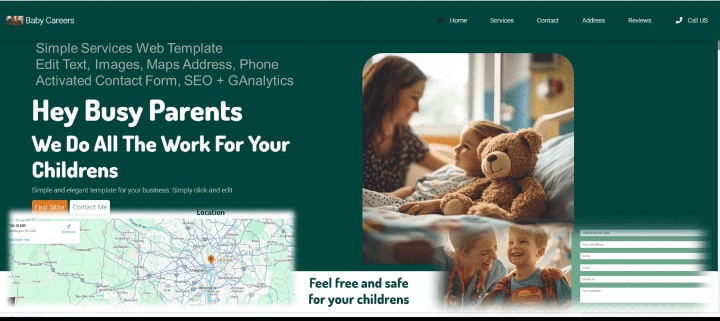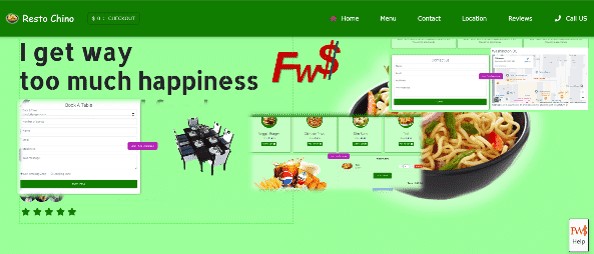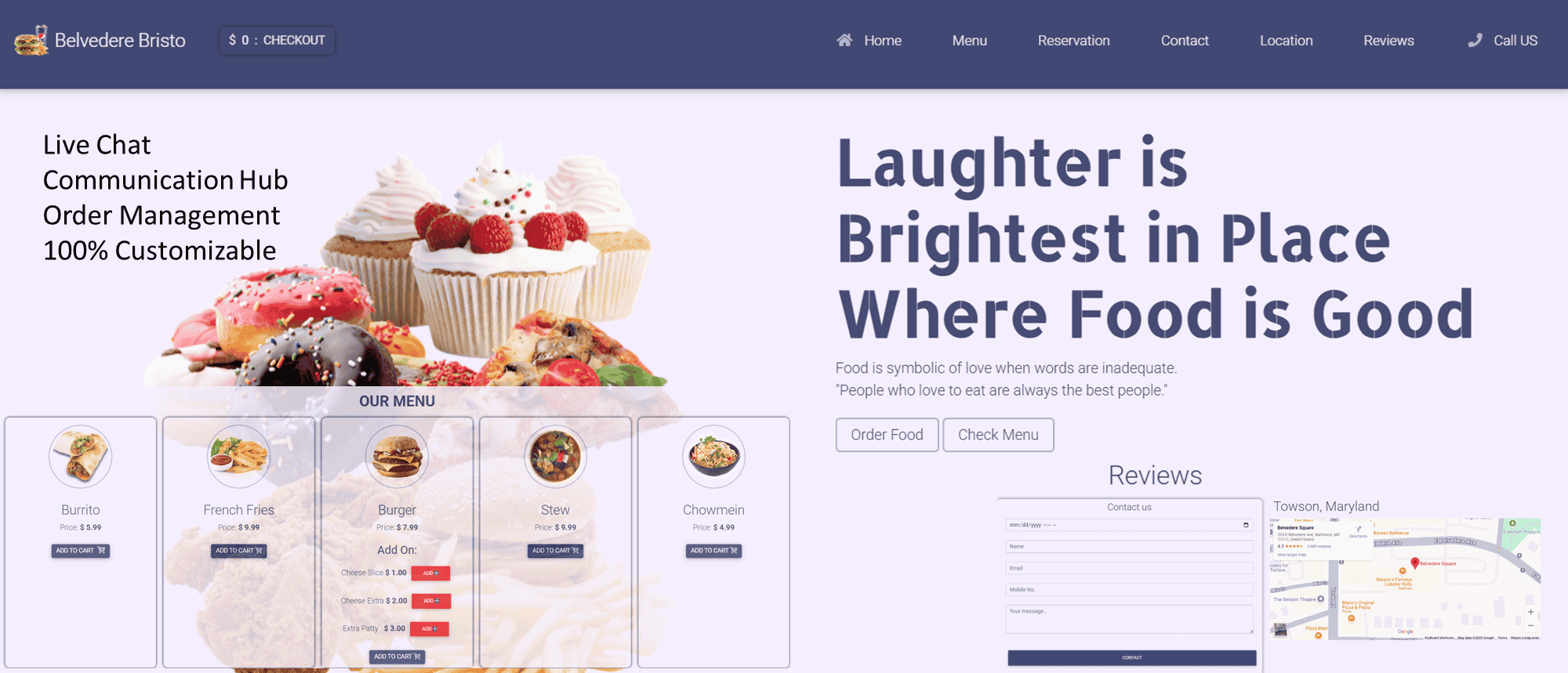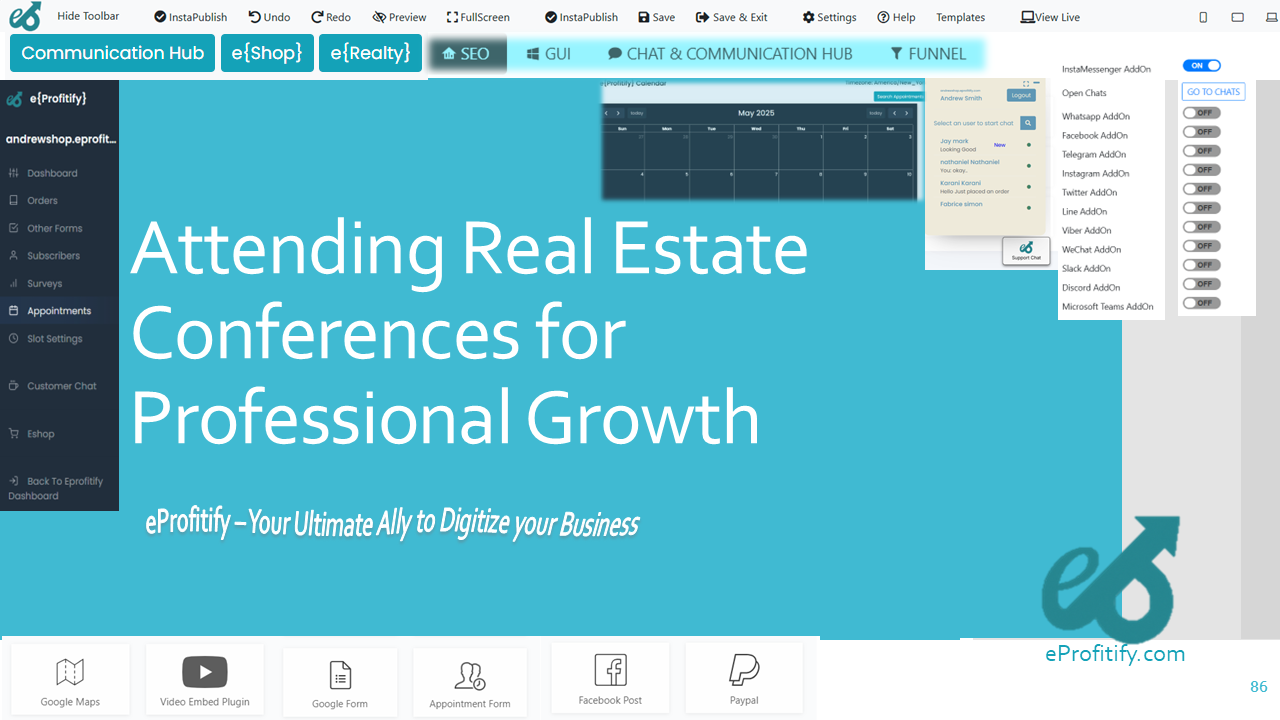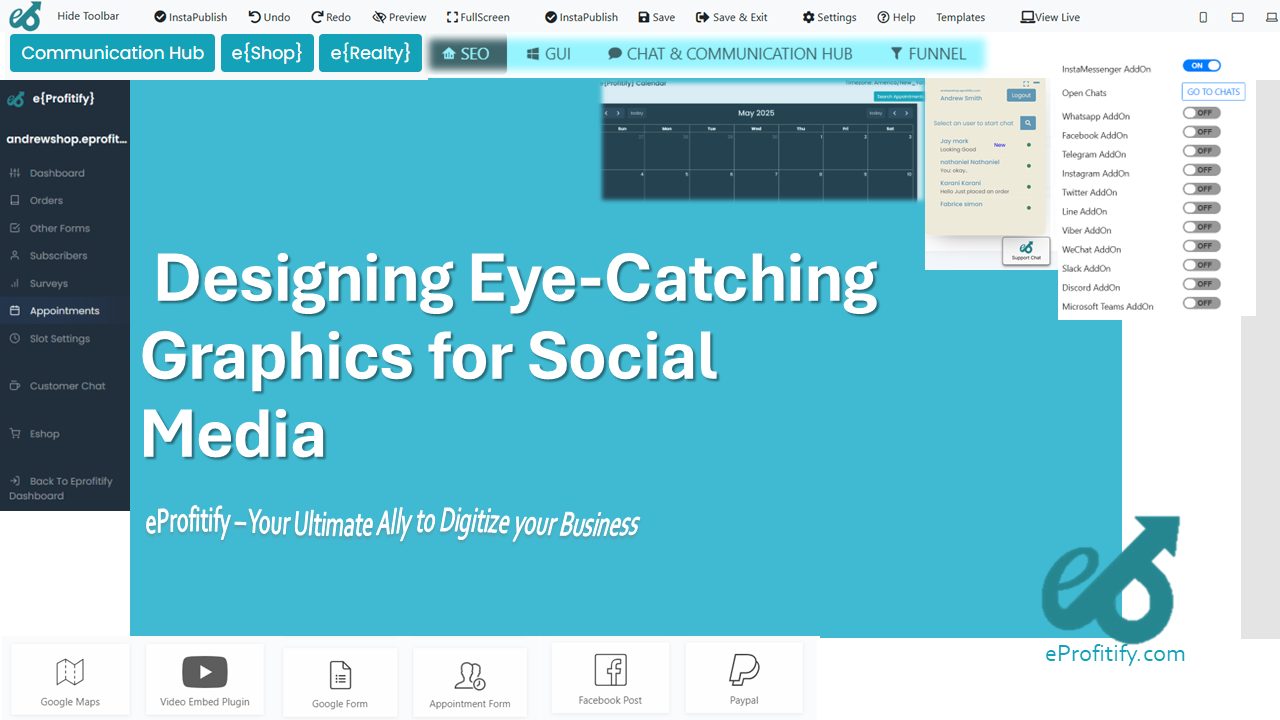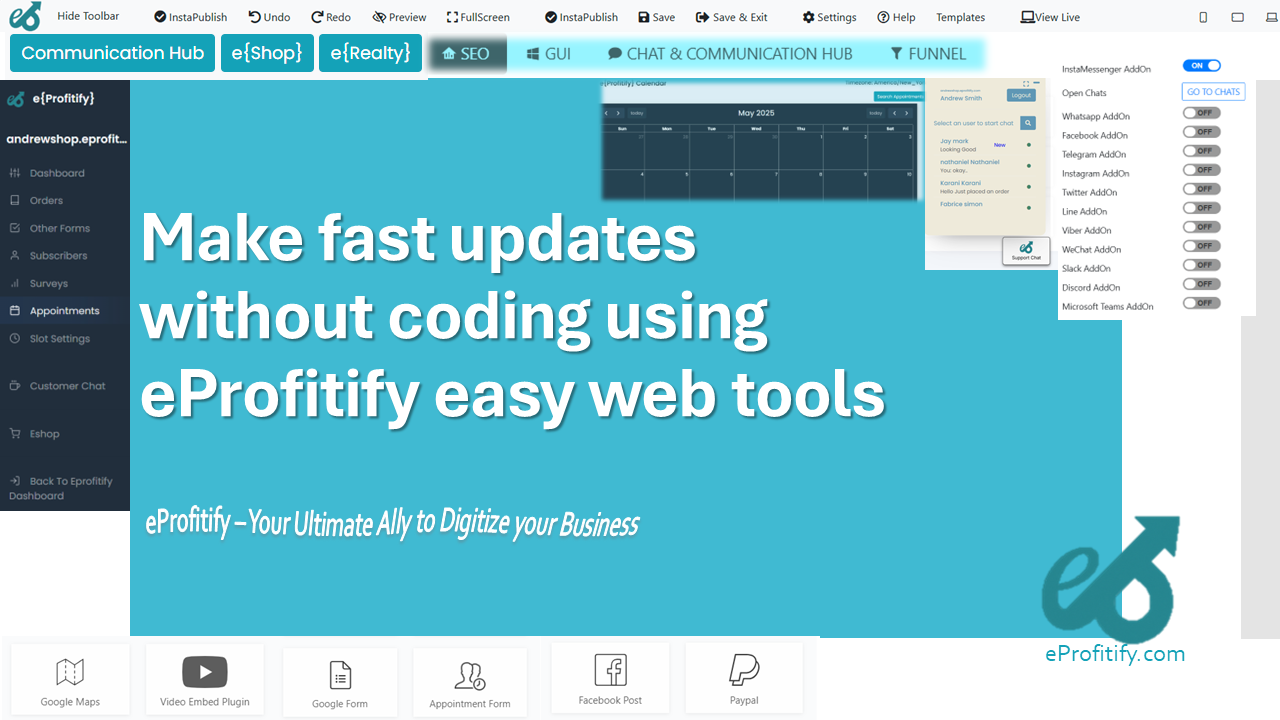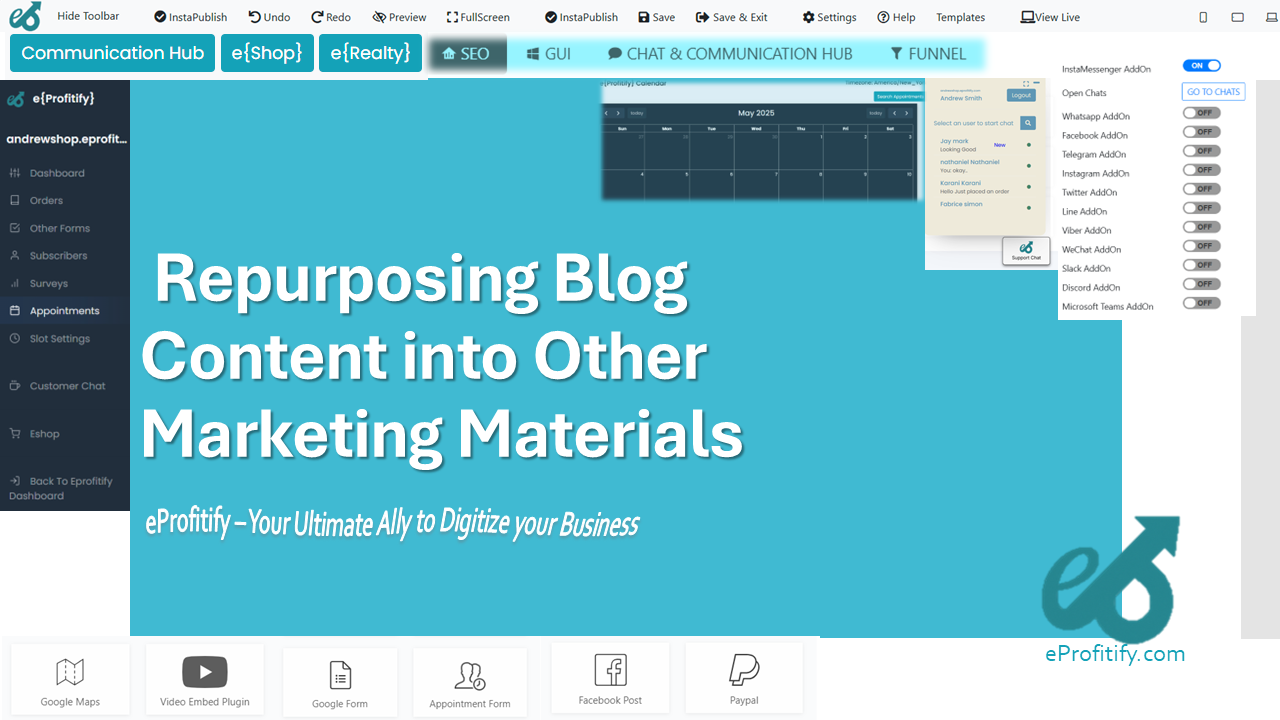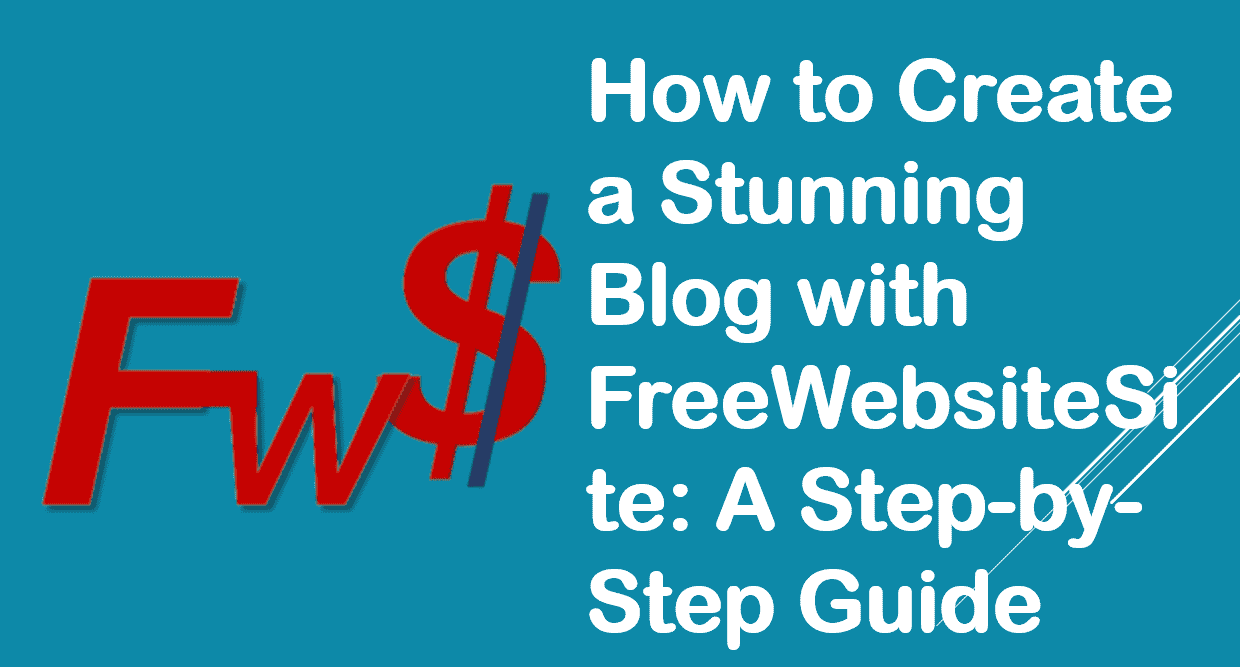Setting up an SEO Calendar for Ongoing Publication
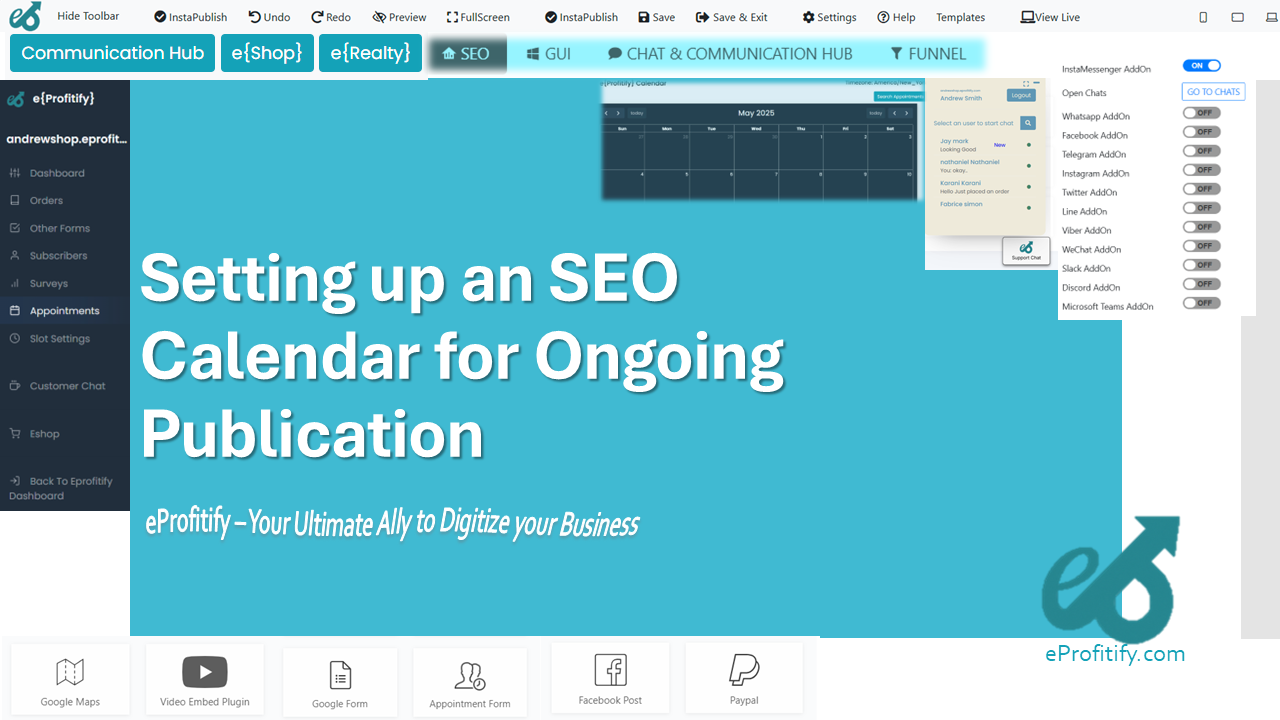
Schedule a LIVE Zoom call with an eProfitify Expert.
Setting Up an SEO Calendar for Ongoing Publication
Search Engine Optimization (SEO) is the backbone of digital visibility, driving 53% of all website traffic and contributing to long-term organic growth. However, maintaining consistent results requires strategic planning. An SEO calendar streamlines content creation, keyword targeting, and performance tracking, ensuring your website remains competitive. This guide outlines the steps to build an effective SEO calendar while highlighting how tools like eprofitify—a leading website publishing and management platform—can enhance efficiency through features like instant messaging, CRM, and ecommerce integration.
1. Define Goals & KPIs
Begin by aligning your SEO calendar with broader business objectives. Common goals include increasing organic traffic, improving keyword rankings, or boosting conversions. Use SMART (Specific, Measurable, Achievable, Relevant, Time-bound) goals and track KPIs like:
- Organic traffic growth (e.g., 30% YoY)
- Target keyword rankings (e.g., 15+ keywords in top 3 positions)
- Conversion rate (e.g., 5% from organic visitors)
According to HubSpot, 70% of marketers prioritize SEO over paid ads due to its cost-effectiveness and sustainability.
2. Conduct Keyword Research
Keyword research identifies high-intent phrases your audience uses. Tools like Ahrefs, SEMrush, or Google Keyword Planner reveal search volume, competition, and trends. Focus on:
- Primary Keywords: High-volume terms (e.g., “best SEO tools”)
- Long-Tail Keywords: Specific phrases (e.g., “SEO tools for ecommerce startups”)
- Competitor Gaps: Opportunities where competitors underperform.
Organize keywords by intent (informational, navigational, commercial) to match content types.
3. Plan Content Clusters
Modern SEO relies on topical authority. Create content clusters around a central pillar page (e.g., “Complete Guide to SEO”) linked to subtopic blogs (e.g., “On-Page SEO Tips”). This structure improves internal linking and signals expertise to search engines. A Semrush study found that websites with organized content clusters see 3x more traffic than those without.
4. Build an Editorial Calendar
Map content ideas to a timeline, considering:
- Seasonality (e.g., holiday shopping guides in Q4)
- Industry Events (e.g., product launches or webinars)
- Content Types (blogs, videos, infographics).
Tools like eprofitify simplify scheduling with its built-in CMS and collaborative dashboard. Assign tasks, set deadlines, and use instant messaging to coordinate teams in real time.
5. Leverage Automation & Collaboration Tools
Manual workflows slow down SEO progress. Integrate tools to automate and streamline tasks:
- Content Publishing: Schedule posts in advance via eprofitify’s CMS.
- CRM Integration: Sync customer data to personalize content.
- Analytics: Track rankings and traffic with Google Analytics 4 or eprofitify’s analytics dashboard.
Automation saves teams 10+ hours weekly, according to Zapier.
6. Optimize & Refresh Content
Google prioritizes fresh, relevant content. Audit existing posts quarterly to:
- Update outdated statistics or links
- Improve meta titles/descriptions
- Add new keywords.
Backlinko reports that updating old content increases traffic by 111% on average.
7. Monitor Performance & Adjust
Review your calendar’s effectiveness monthly. Track:
- Keyword ranking fluctuations
- Traffic sources (mobile vs. desktop)
- Bounce rates and conversions.
eprofitify’s CRM complements this by correlating SEO performance with customer behavior, enabling data-driven refinements.
Why eprofitify Enhances SEO Workflows
eprofitify stands out as an all-in-one platform for publishers and marketers, offering:
- Instant Messaging: Coordinate content teams and freelancers seamlessly.
- Appointment Management: Schedule SEO audits or client meetings without switching apps.
- Ecommerce Integration: Optimize product pages and track sales from organic traffic.
- CRM: Align SEO strategies with customer journey stages.
Businesses using eprofitify report a 40% reduction in project management bottlenecks, allowing them to focus on high-impact SEO tasks.
Conclusion
An SEO calendar transforms fragmented efforts into a structured growth engine. By combining keyword research, content planning, and performance analysis with tools like eprofitify, businesses can sustain visibility, engage audiences, and drive conversions. As 61% of marketers say SEO is their top inbound marketing priority (BrightEdge), adopting a proactive, tool-supported approach ensures long-term success in competitive digital landscapes.
